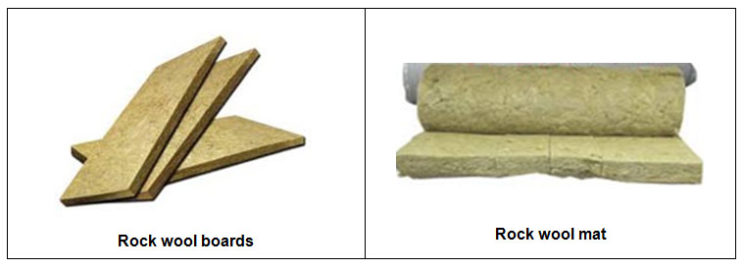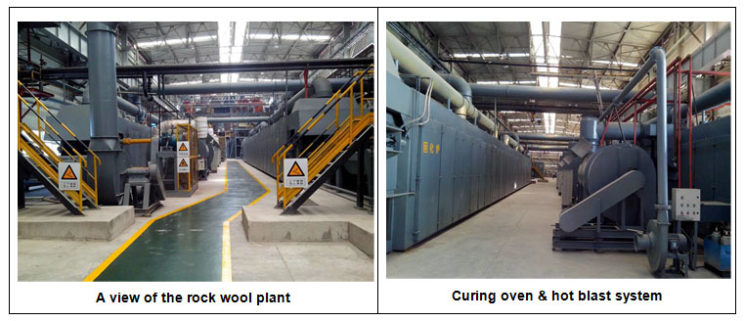Rock wool making plant from China, using the molten slag from MAGMA / Blast Furnace
Rockwool (stone wool or mineral wool) is a non-metallic, inorganic, fibrous, glossy substance made from stone / rock (volcanic rock, typically basalt) and blast furnace slag as the major components.
Rock wool is mainly used as an insulation material to save energy, combat noise, reduce the risk of fire and to protect the property and life in the event of fire. Rockwool panels are widely used in the construction industry all over the world.
Rock wool is an excellent and cost-effective material for thermal, electrical & acoustic insulation. It has gained extensive popularity for its properties in fire-resistance, thermal insulation efficiency, durability, ease of installation & sound adsorption.
Common house-hold applications of rock wool include insulation of lofts, cavity walls, internal & external walls, flat roofs & heating systems. Common industrial applications include large diameter pipe insulation, insulation of tanks & vessels, insulation for boilers, turbines, ovens & critical marine & offshore installations, including fire & acoustic insulation in ships and in oil rigs.
Traditionally for rock wool manufacture, ingredients like basalt stone, blast furnace slag, limestone & dolomite are melted in a cupola furnace, using coke. The molten lava is poured into a high speed centrifugal machine, which converts the same into fibers. These fibers are collected by a drum type wool collecting machine & subsequently formed into layers by a pendulum machine & pre-pressed by a crimping machine. The boards are finally dried in a curing oven, with phenol formaldehyde glue already applied on them. The cured boards are cut into pieces, packed & sold as they are, or sandwiched in between corrugated steel sheets & then sold.

Rock wool making from the molten slag of MAGMA / Blast Furnace
Research conducted in Russia has confirmed that the chemical composition & properties of slag produced by MAGMA / Blast Furnace is suitable for the production of rock wool.
The temperature of slag, drained from MAGMA, can be easily maintained within the required limits. The slag draining system used in MAGMA allows controlling the flow of slag & speed of draining the slag within the set limits for rock wool production.

The lava flow of MAGMA can be made either as batch or continuous. The molten lava is taken out to a ladle & from the bottom of the ladle;the lava is supplied continuously for rock wool production line. Temperature of the molten lava is 1,400-1,650°C (temperature required for rock wool production is more than 1,350°C). A typical composition of lava from the MAGMA unit is as below –
CaO – 29-31%
SiO2 – 30-32%
MgO – 2-5%
Al2O3 – 20-25%
FeO – 3-4%
Basicity – 0.6-0.65
Acid value – 1.55-1.65
A very small sized MAGMA smelter can make 36,000 tons of pig iron & 15,000 tons of molten slag. If this molten slag is converted into rock wool, it will give additional revenue of Rs. 45 crores per year, while the incremental cost of rock wool production will be around Rs. 20 crores. Rock wool plant will improve the overall viability of MAGMA project.
The cost of production of rock wool in the MAGMA route is 50% cheaper than the traditional route, as there is no need to re-melt the raw materials. The incremental investment on a rock wool plant of 15,000 tons per year is Rs. 10-12 crores, while the pay-back period is less than 1 year.
